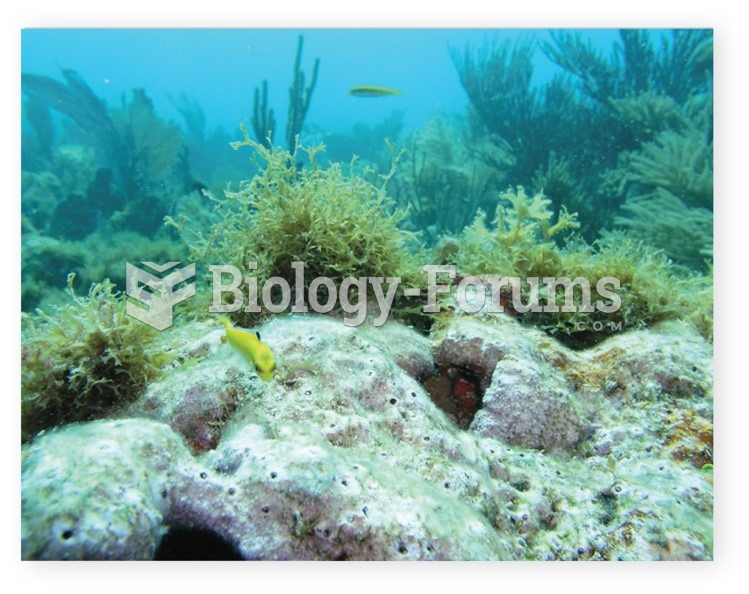Answer to Question 1
Coral are algae living together with an algal symbiont. Corals rely on the photosynthesizing algae for nutrients, while the coral provide the algae with certain nutrients. Corals mostly thrive in warm tropical oceans. Corals exist as both solitary and colonial formations. The colonial corals produce enormous structures, formed by the accumulation of skeletal calcium carbonate that is lithified into rock. These coral reefs form through many generations, with live corals near the ocean's surface building on the foundation of the older coral skeletons. Coral reefs form a community of other marine organisms. Indeed, coral reefs are among the most diverse ecosystems in the world, often called rainforests of the oceans. (this latter information is not in the text actually, but nonetheless very important).
Occasionally, corals will expel the algal symbiont, resulting in the normally colorful coral turning stark white and often leading to massive coral mortality (also not explicitly mentioned in the text, but very important). This die off threatens the entire coral reef ecosystem.
There are a number of causes of this expulsion/bleaching. These include pollution, disease, sedimentation, changes in ocean salinity, and increased ocean acidification. Another cause is the warming of sea-surface temperature, either through natural cyclic events, such as El Nio or due to global climate change.
Answer to Question 2
Barrier beaches are long, narrow depositional features that form offshore. When they widen, they become barrier islands. Barrier islands are quite common, occurring offshore of nearly 10 of Earth's coastlines.
Various hypotheses explain the formation of barrier islands. They may begin as offshore bars or low ridges of submerged sediment and then gradually migrate toward shore with wave action.
Human-built structures on barrier islands are vulnerable to erosion and redeposition of coastal sediments by tropical storms and rising sea level.







